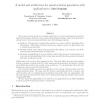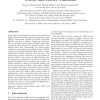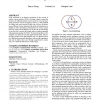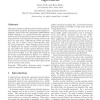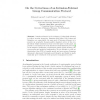216 search results - page 33 / 44 » Formal Proofs for the Security of Signcryption |
CCS
2005
ACM
14 years 1 months ago
2005
ACM
We present a formal model and a simple architecture for robust pseudorandom generation that ensures resilience in the face of an observer with partial knowledge/control of the gen...
IJNSEC
2008
13 years 7 months ago
2008
In this paper, we investigate the issues in the analysis and design of provably secure message authentication codes (MACs) Nested MAC (NMAC) and Hash based MAC (HMAC) proposed by ...
MOBIHOC
2008
ACM
14 years 7 months ago
2008
ACM
Local monitoring is an effective mechanism for the security of wireless sensor networks (WSNs). Existing schemes assume the existence of sufficient number of active nodes to carry...
IJNSEC
2006
13 years 7 months ago
2006
This paper presents an efficient password-based authenticated encrypted group key agreement protocol immune to dictionary attack under the computation Diffie-Hellman (CDH) assumpt...
CHARME
2003
Springer
14 years 21 days ago
2003
Springer
Intrusion-tolerance is the technique of using fault-tolerance to achieve security properties. Assuming that faults, both benign and Byzantine, are unavoidable, the main goal of Int...
